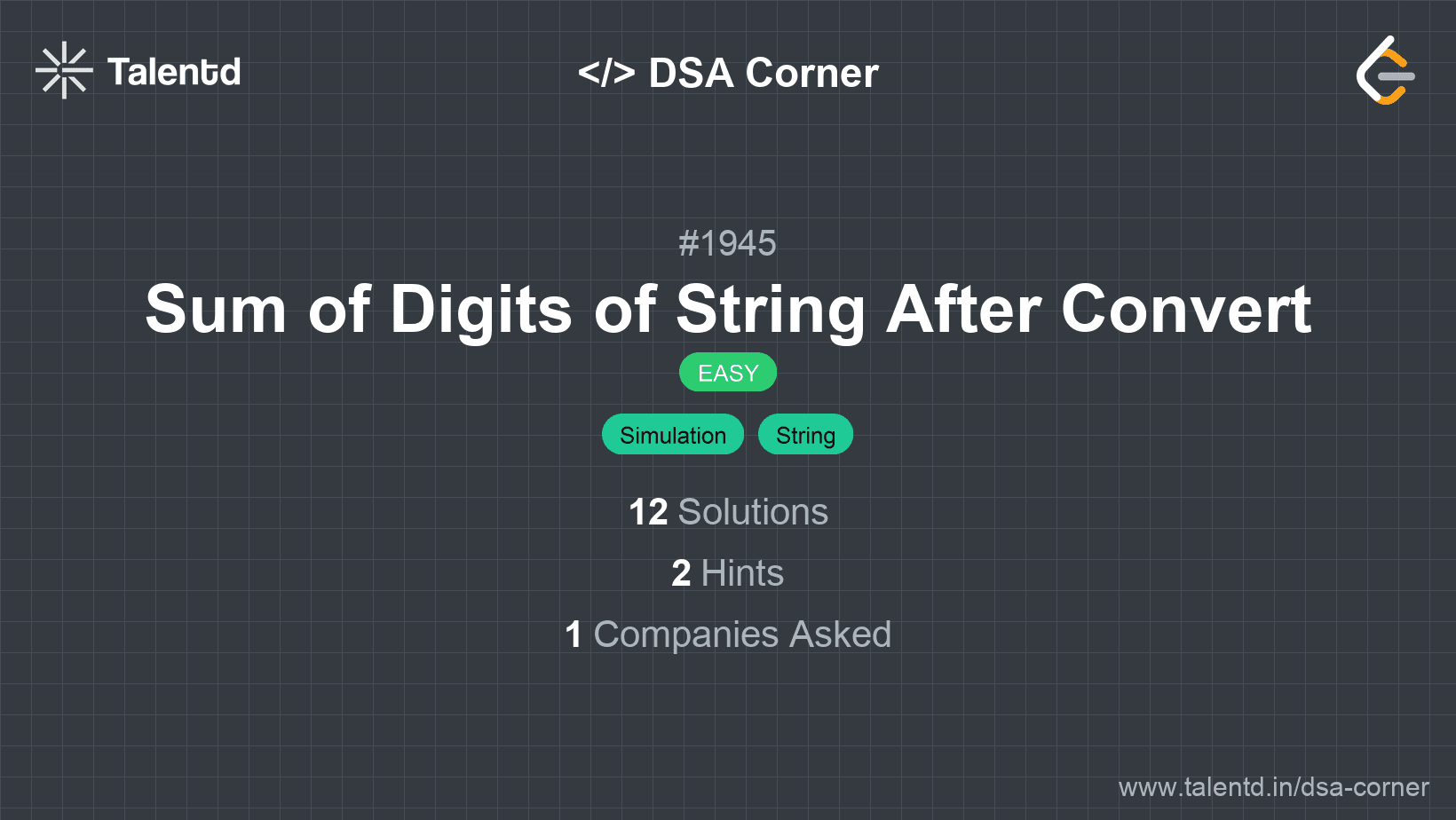
Sponsored
Sponsored
This approach involves converting each character to its corresponding position in the alphabet and forming a numeric string. We then sum the digits of this number 'k' times to get the resulting integer.
Time Complexity: O(N + kM), where N is the length of the string and M is the number of digits in the transformed number.
Space Complexity: O(M), as we store the transformed number as a string.
1def digit_sum(num):
2 return sum(int(digit) for digit in num)
3
4def sum_of_digits_after_convert(s, k):
5 num = ''.join(str(ord(c) - ord('a') + 1) for c in s)
6 for _ in range(k):
7 num = str(digit_sum(num))
8 return int(num)
9
10print(sum_of_digits_after_convert('zbax', 2))Python provides simple handling of strings and numbers. The string conversion is achieved using list comprehensions, and the repeated digit sum calculation is handled using a loop and the digit_sum function.
This approach directly calculates the digit sum during the conversion of the string to a number by aggregating the sum of each digit representation, reducing the need for intermediate large integer string handling.
Time Complexity: O(N + k*logM), where M is the intermediate sum value.
Space Complexity: O(1).
1#include <string>
using namespace std;
int sumOfDigitsAfterConvert(string s, int k) {
int sum = 0;
for (char c : s) {
int val = c - 'a' + 1;
while (val) {
sum += val % 10;
val /= 10;
}
}
for (int i = 1; i < k; i++) {
int newSum = 0;
while (sum) {
newSum += sum % 10;
sum /= 10;
}
sum = newSum;
}
return sum;
}
int main() {
cout << sumOfDigitsAfterConvert("zbax", 2) << endl;
return 0;
}The character value is directly converted and its digit sum is accumulated inline, reducing intermediate conversions. Repetitive sum calculations are efficient due to direct digit manipulation.